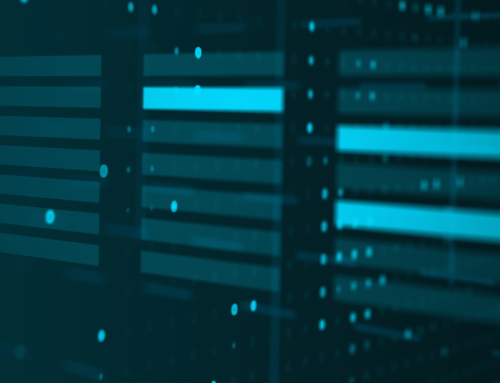IT is Making a Major Shift from Devices to Digital Workspaces
There is no question that personal computing has evolved greatly since its mainstream introduction into business. Since Liquidware was born in 2009, we personally have seen the introduction of VDI, the extension of remote desktop delivery technologies, proliferating SaaS and DaaS applications and cloud.  The nature of personal devices and apps has changed dramatically. Today, the IT landscape is so altered that  even the term “desktops” has become outmoded.

Today, we tend to use the term “digital workspace,” which essentially refers to an integrated technology framework designed to deliver and manage app, data, and desktop delivery. It allows employees to access their apps and data remotely and in real-time – on any device, from any location, at any time, regardless of whether the information is stored through cloud services or in the data center.
The Pandemic Pushed the Pedal on Digital Workspaces
The advent of all these developments were already driving companies to explore the limits of remote work and flexible digital workspaces. Many organizations wanted to bring applications and data processing closer to the “action,” so industries like healthcare, education, law enforcement, inventory management and logistics, for example, could access and transfer data immediately in the location where work needed to be performed.
However, the pandemic hitting the globe in 2020, accelerated the push to remote work more aggressively than any other single force. Mainly because – for many organizations — it was a matter of survival. With many more employees working off-site, digital workspaces became the rule, not the exception. However, managing digital workspaces is very different from managing desktops and requires an IT staff to make a cultural shift in management techniques. With digital workspaces, pretty much all of the computing and data management is abstracted and stored in data centers or the cloud, not local machines. It runs on shared, not discrete, systems. The digital workspaces framework needs a purpose-built solution in order to provide visibility into these abstractions and shared systems. And so, as devices transitioned to digital workspaces, the need for a new breed of monitoring solution called digital experience monitoring has also arisen.
Digital Workspaces Gives Rise to Digital Experience Monitoring
With the use of cloud and SaaS applications dramatically increasing, the focus has shifted from systems monitoring to Digital Experience Monitoring or DEM, which goes beyond servers and storage to include end point devices, third party applications, infrastructure, and networks. DEM solutions coordinate metrics data across all of these in order to provide a true and complete picture of the user experience including the local devices and last-mile networks, which are typically outside of IT’s control.
Legacy Monitoring Solutions Lag DEM
As the term DEM has come into vogue in the past couple of years, numerous traditional and specialty monitoring solution providers have jumped onto this bandwagon and have rechristened themselves with this term. However, this trend is misleading as many products are focused on parts of — not the whole — of the digital workspaces framework. In fact, in-silo monitoring is one of the biggest complaints of organizations which are looking for a true DEM solution. IT monitoring tools typically fall into one of the following categories:
- Network Performance Monitoring and Diagnostics (NPDM),
- IT Infrastructure Monitoring (ITIM)
- Application Performance Monitoring (APM)
- End-point device monitoring (EDM)
These products all reflect a “specialty” category, meaning that they will focus areas such as application performance, network performance or security of endpoint devices but not go far enough to provide the total visibility needed to understand what is going on with the shared infrastructure that supports digital workspaces. With such limitations, problem areas can remain hidden and spring up as ugly surprises, when IT staff is least prepared.
As more and more IT assets are being relocated or used outside the enterprise domain, traditional tools lag too because they remain focused on enterprise-owned assets. With cloud and SaaS applications and remote work / WFA playing a much larger role, additional visibility needs to be built into monitoring solutions across this entire framework.
Stratusphere UX – First and Always DEM
Unlike traditional monitoring tools, Stratusphere UX puts the digital workspaces user experience front and center. The solution was the first to the market with a unique understanding of the totality of metrics needed to monitor a shared workspace environment. Stratusphere UX was a DEM solution way before this term was coined and is now used by hundreds of enterprises to monitor and diagnose issues in increasingly distributed digital workspace environments.
Stratusphere UX provides a direct view of workspace performance—a view of the user that is the most authentic and relevant. Ultimately, challenges or constraints in the user experience may require remediation at the supporting infrastructure, at the endpoints, across applications or processes, or even in the machine boot and login process. And when users are in jeopardy, due to unplanned downtime or other user experience issues, it’s all about quickly understanding the root cause and having visibility to the data that relates to the actual issues (all of them) that are contributing to the problem.
Additionally, Stratusphere UX offers an API that allows admins to flow its metrics and information into other data visualization and ITSM tools, allowing critical information to be delivered in relevant formats to critical IT decision makers.
With Stratusphere UX, Admins Can…
- Assess and quantify machine, user, application, OS, and infrastructure metrics.Â
- Gain visibility into user persona and authored dataÂ
- Quantify application use to support master image design.Â
- Login breakdown to quickly identify source of time-consuming bottlenecks.Â
- Identify unused applications.Â
- Baseline optimum user experience for SLA, KPIs.
- Determine whether applications used are a good/fair/poor fit for digital workspaces.Â
- Pool users into tiered desktop architecture.Â
- Plan for infrastructure capacity (CPU, RAM, GPU, Storage, IOPs) based on actual consumption data.
- Ongoing and proactive monitoring by scoring and quantifying the  user experience.Â
- End-to-end visibility into all layers of a digital workspace’s infrastructureÂ
- Confidence to scale from proof-of-concept to production.Â
- Validation of infrastructure changes to ensure continued optimal performance.Â
- Identify rogue entities to minimize resource contention.Â
- Quickly identify bottlenecks and root causality.Â
- Portray “What-if” scenarios to determine impact to environment.
- Support for physical and virtual machines as well as mixed platform workspaces.
- Get insight into last mile metrics to support work from anywhere programs.
A special feature, called Process Optimization can be set to automatically optimize CPU and Memory, even as system demands fluctuate. Process Optimization can keep “bad actor” applications or runaway processes from crippling the performance of users’ workspaces by prioritizing resources for those applications being actively used over those applications not used or background processes. The feature automatically manages the priority applications and processes. However, administrators can manually raise, lower, or terminate offending or non-essential processes as needed.
The Process Optimization feature requires no additional infrastructure. It is a simple, zero-impact feature that can be turned on for single machines, or groups, or globally. This feature is a major benefit in hybrid multi-platform environments. By default, this feature employs a “do no harm” provision. No processes are forced by default ensuring that the system remains stable and in line with requirements.
No other solution on the market offers comparable full rich data sets or the same level of accuracy of data to support decision making on digital workspaces transitions. Stratusphere UX was the first and always the most accurate and relevant DEM solution for digital workspace environments.








Leave A Comment
You must be logged in to post a comment.